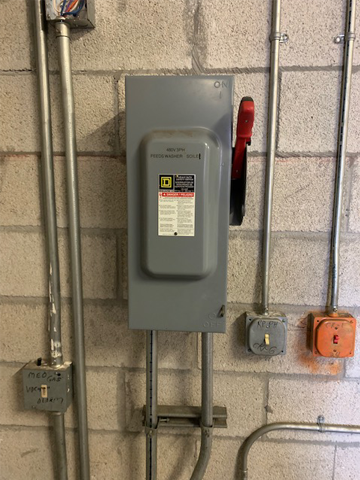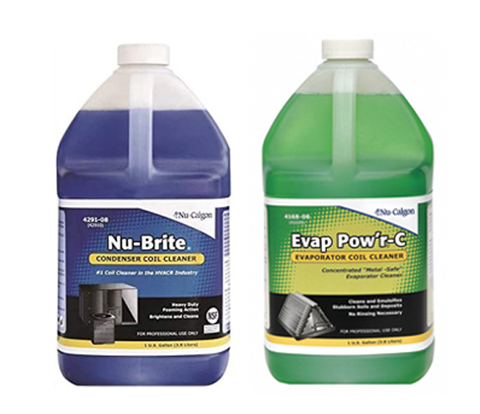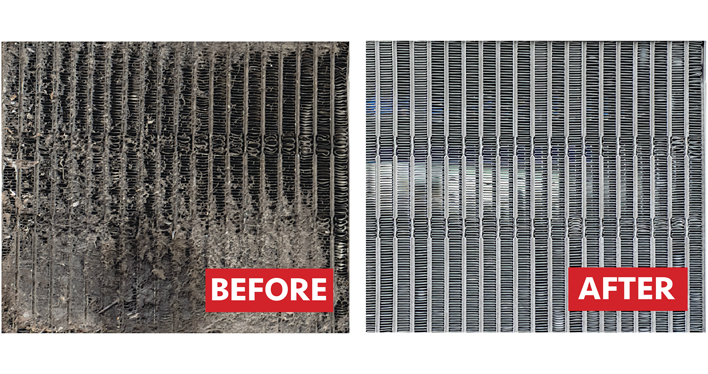How to Clean Commercial HVAC Coils
Dirty HVAC coils can lead to decreased efficiency and increased energy costs. Regular cleaning ensures optimal performance and extends the life of your equipment. Dirty coils can hike up energy consumption by as much as 30%. That's why we suggest implementing a regular coil-cleaning schedule right after installing new equipment. Think of it like visiting the dentist—unpleasant but essential. With advice from our experts, it doesn't have to be too daunting… HOW DO YOU KNOW YOUR COILS NEED CLEANING? Scheduling routine maintenance is the best way to ensure your coils stay clean. However, there are some signs you can look out for: HOW OFTEN SHOULD COILS BE CLEANED? Under typical environmental conditions, a DX evaporator coil or condenser coil should be cleaned annually. In times of heavy cooling demand or when exposed to environments prone to dust or pollen buildup, more frequent cleaning is recommended. Coils with a high fin density tend to trap dirt and should be cleaned more often. A condenser coil operating under extreme conditions: quarterly cleaning. THE CLEANING PROCESS: Before starting, turn off and lockout the power supply to the unit to avoid accidental activation. Avoid saturating motors or electrical components to prevent potential failures due to excessive moisture. Remove large debris and straighten bent fins prior to cleaning. Use a pressure washer with a nozzle between 25 and 40 degrees to avoid bending the aluminum fins. Opt for non-acidic, alkaline-based cleaners like Nu-Brite for condenser coils or Evap Pow’r-C for evaporator coils. These cleaners have foaming properties that help remove dirt from inside the coils. If an acidic cleaner must be used, follow the instructions carefully and rinse the coil thoroughly afterward to eliminate all residues. Acidic cleaners carry risks and can damage the coil if mishandled. In case of stubborn dirt, use a soft-bristle brush gently. After cleaning, rinse the coils thoroughly with a pressure washer or hose. Failure to adhere to these guidelines or the manufacturer’s instructions could lead to damage to the unit. Be cautious when handling harsh chemicals to prevent injury or equipment harm. STEAM CLEANING FOR MINIMAL MESS For coils located indoors, a steam cleaning system is a practical option to reduce mess. Steam eliminates the need for chemical cleaners but still requires careful attention to avoid over-saturating motors or electrical components. Apply the steam at low pressure and keep the stream parallel to the fins to prevent bending them. Remember, even coated coils require regular cleaning to maintain their protective layer. MAINTAINING YOUR COILS FOR LONGEVITY Well-maintained commercial HVAC coils can last a long time. Typically, condenser coils last 10 to 15 years, DX evaporator coils last 15 to 20 years, and water coils exceed 20 years. High-quality replacement coils can match or even surpass the longevity of original equipment manufacturer (OEM) coils, especially if made with thicker materials. However, remember that the physical placement of the coil and environmental factors—whether natural or human-made—can significantly impact its lifespan. COATED COILS: SPECIAL CONSIDERATIONS Coated coils resist corrosion from various contaminants. While the coating adds protection, it doesn’t make the coil immune to dirt or blockages. Maintaining coated coils just like uncoated ones is crucial to ensure the coating remains in optimal condition for years of corrosion prevention. Have questions or need a coil quote? Feel free to reach out to us anytime. Seashell Jewellery,Nasa Shell Necklace,Mango Shell Neck Leis,Puka Shell Necklace Lei,Sea Shell Jewelleries Xuzhou Kylin Craft & Gifts Co., Ltd. , https://www.kylincraftandgifts.comCleaning Commercial HVAC Coils: A Comprehensive Guide
Units located within a mile of saltwater: monthly cleaning.
A DX evaporator coil near corrosive environments: quarterly cleaning.


Written by: Stephen Barzelatto
Vice President of Nationwide Coils
